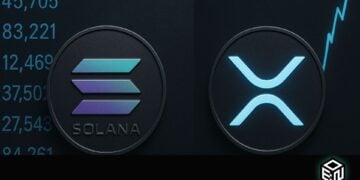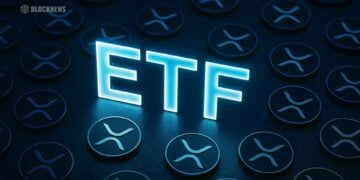- Runes, a new token standard on Bitcoin, has surpassed the established Ordinals and BRC-20 in transaction share since its April launch.
- The adoption of Runes has rapidly grown, accounting for over 50% of Bitcoin’s network bandwidth on consecutive days.
- This increased activity has significantly boosted Bitcoin mining revenue, contributing nearly 2,500 BTC to the market.
The recent surge in blockchain activity has marked a significant shift in the usage dynamics of the Bitcoin network. The Runes standard, introduced on April 20, has quickly become a dominant force, overtaking the longstanding Ordinals and BRC-20 token standards in terms of transaction volume.
Runes’ rise to prominence was highlighted by its rapid capture of network bandwidth. Within just three months of its launch, Runes accounted for more than 50% of the network’s bandwidth for two consecutive days, on June 10 and 11, demonstrating a robust and growing interest from the investor community.
A New Era for Bitcoin Network Utilization
In 2024, while the BRC-20 token standard had previously dominated the network’s bandwidth, occupying over 50% for seven days, Runes achieved this milestone more swiftly and effectively. The enthusiastic reception of Runes signals a shifting preference among Bitcoin users and developers towards more versatile tokenization standards that can support a variety of applications, including decentralized finance (DeFi).
The increased transaction activity associated with Runes has also had a positive impact on Bitcoin mining operations. Since its inception, Runes has generated nearly 2,500 BTC, translating to approximately $170 million in market value. The breakdown of earnings includes 1,377 BTC from minting operations, 61 BTC from etching activities, and 1,011 BTC from edicts.
This surge in mining revenue comes at a critical time when the overall profitability of Bitcoin mining has been under pressure due to fluctuating market conditions and rising energy costs.
Implications for Bitcoin’s Future
The success of Runes not only underscores the evolving landscape of Bitcoin’s network usage but also hints at the broader potential for Bitcoin to host more complex blockchain applications traditionally reserved for platforms like Ethereum. As transaction volume and network participation continue to grow, Bitcoin may see an increase in its utility and value, further cementing its position as a versatile and foundational technology in the cryptocurrency space.
The rise of Runes and its impact on network dynamics and mining economics could potentially lead to more innovative uses of the Bitcoin blockchain, expanding its role beyond a mere store of value to a robust platform for decentralized applications.














